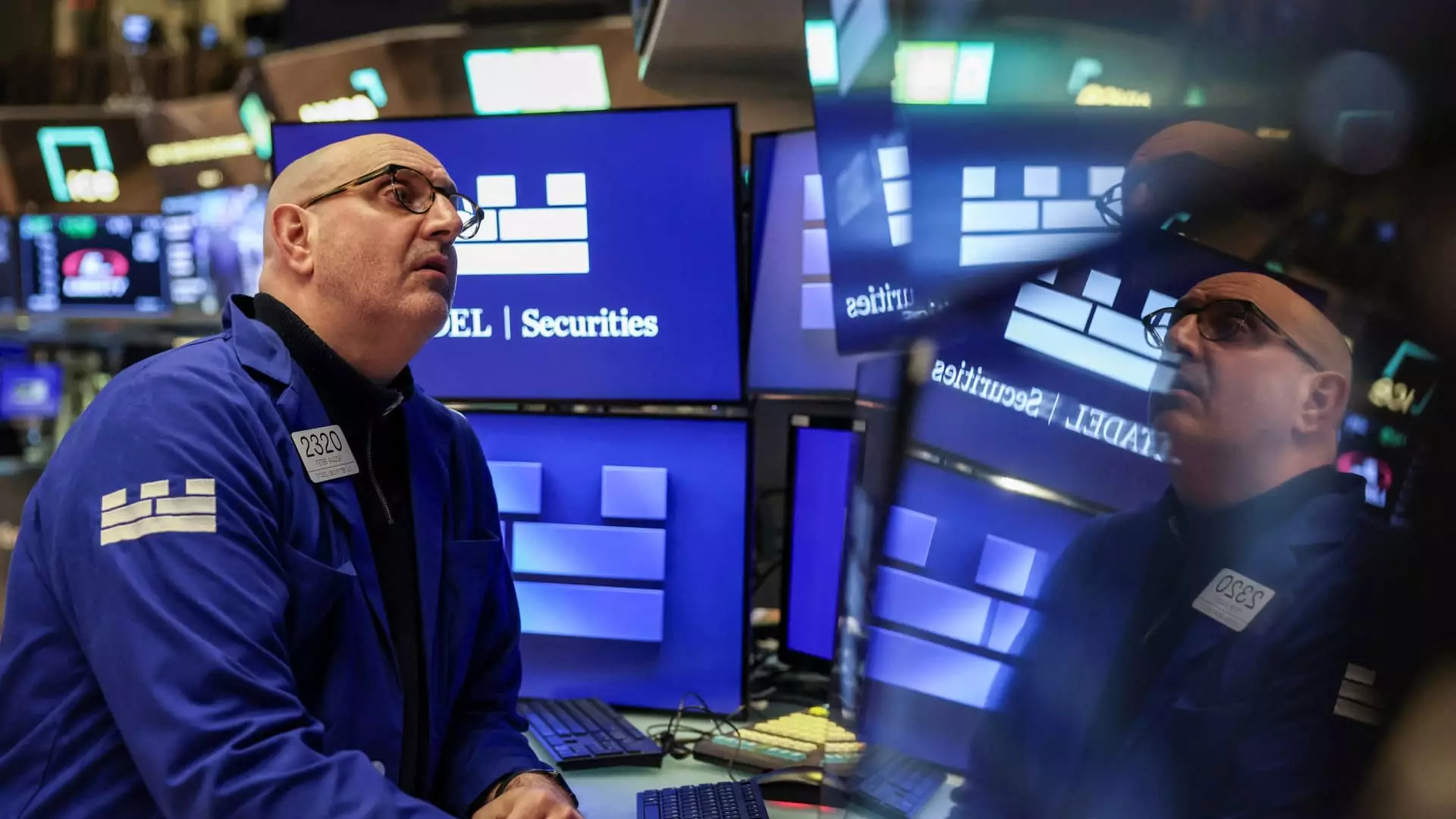March has not been kind to Meta Platforms, the parent company of Facebook, Instagram, and WhatsApp. The firm, once considered an indomitable titan of the social media landscape, has faced a steep decline echoing the struggles of several peers in the tech sector, dubbed the “Magnificent Seven.” Analysts like Chris Grisanti from MAI Capital Management recently pinpointed this amidst the market’s volatility, pointing to a curious contradiction: despite being down over 6% this month, Meta somehow nudges toward becoming an attractive buy once again.
Yet it’s impossible to ignore the wider context. Meta shares, although bouncing back 5% this week, are still hovering around 15% below recent peaks. With its fluctuating stock prices resembling a rollercoaster, one must question what genuine strategic advantages remain for the company that was once the crown jewel of Silicon Valley.
The Glittering Potential of AI Investment
One of the cruxes of Grisanti’s argument in favor of Meta lies in the company’s substantial investment in artificial intelligence (AI). Yes, the hefty spending on AI has been a double-edged sword. Initially, it causes concern among investors and can lead to skepticism about the company’s ability to generate profit. But Grisanti rightly points out that this investment is already baked into the stock price, suggesting some level of market consensus that the gamble might just pay off.
The optimism around projected double-digit earnings growth over the next few years undoubtedly paints a rosy picture. But is it sturdy enough to withstand external economic pressures and competition? Will this investment in AI yield transformative results, or will it become yet another ledger item that investors will have to learn to live with?
The venture into AI also represents a pivotal search for relevance in a saturated market. While may view the heavy spending as reckless, others interpret it as an all-or-nothing approach. As much of the tech landscape continues to pivot toward AI solutions, Meta’s ability to leverage this technology could either position it as an industry leader or render it obsolete.
The Real Dilemma: A Shift in Consumer Behavior
This leads us to the wider connection between consumer behavior and market resilience. Meta is navigating a fundamental challenge: the social media landscape is not only oversaturated but also evolving. Users want authenticity, privacy, and engaging content tailored to their personal preferences—fragments of demands that can be difficult to translate into a profitable business model. As online engagement evolves, does Meta’s framework for revenue generation adapt swiftly enough to tether consumers back who might be veering away toward TikTok or other innovative platforms?
While the sentiment suggests people are returning to traditional platforms, can we truly equate this with a regaining of trust? For every uptick in share price, a demographic shift toward newer platforms looms large, casting shadows on the company’s long-term growth potential.
Homebuilder Shares: A Cautionary Tale
Conversely, let’s pivot to the housing market, where ambiguity reigns supreme. Chris Grisanti voiced skepticism towards homebuilder stocks like KB Home. Even in an environment where interest rates may decline, he noted that these rates will likely drop due to an ailing economy rather than sound monetary strategy. This perception fills the air with anxiety about cyclical industries facing downturns amidst slow growth.
In stark contrast to meta, where optimism appears rooted in technological innovation, the homebuilding industry seems cursed to react to instability. It becomes increasingly clear that while tech stocks flirt with new horizons, traditional sectors like housing remain shackled to external economic factors and are often unable to demonstrate the resilience we wish to invoke.
A Rethink on Consumer Staples
Turning our focus back to consumer staples, corporations like McCormick seem to be walking on fragile ground. Outperforming peers historically, McCormick traded near all-time highs but has since plateaued. Analysts might commend its consistent performance, but mediocrity in growth could steer potential investors away.
Grisanti’s observations indicate that as Meta limps toward recovery, the glaring question persists: why go for slightly upward-trending stocks when the potential for meteoric recoveries still exists in companies that have plunged? This competitive metaphoric landscape calls into question the wisdom of sticking with the defensive plays of consumer staples when cyclical stocks may offer more tantalizing returns.
In this unpredictable market terrain, it’s essential for investors to sift through narratives, feasibility, and market sentiment. The question remains: will you bet on Meta’s transformation or stick with the safe yet uninspiring options in consumer staples? Your appetite for risk may very well dictate your future earnings.


Leave a Reply